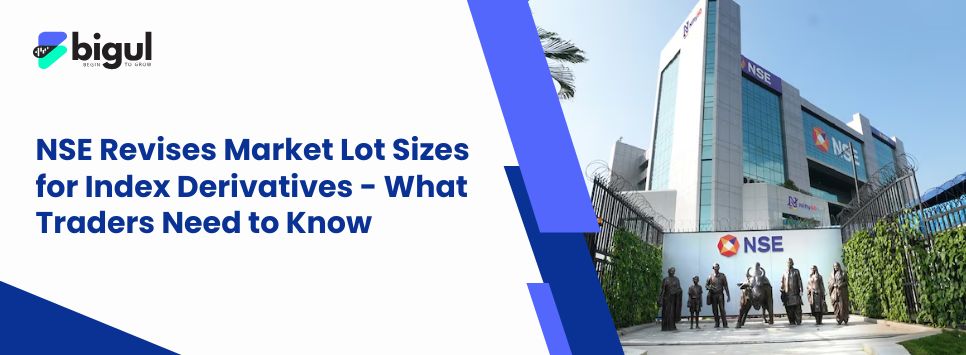Illiquidity, the opposite of liquidity, characterises assets that cannot readily be converted into cash. Some assets, often referred to as liquid assets, possess the valuable quality of quick cash conversion when needed, while others fall into the category of illiquid assets, posing challenges in such circumstances.
Notably, illiquid assets may carry substantial value but may require an extended period for conversion into cash. Real estate serves as a prime illustration, despite its popularity as an investment avenue, it lags in liquidity compared to assets like actively traded equities.
This article goes through the concept of illiquidity, focusing on illiquid stocks, their definition, identification, and more.
Meaning of Illiquid stocks?
Illiquid stocks are shares of a company that lack sufficient trading activity, making them challenging to buy or sell in the market. These stocks often have low trading volumes and wide bid-ask spreads, indicating a limited number of buyers and sellers. Illiquidity can stem from various factors, such as the company’s size, public interest, economic conditions, or regulatory restrictions.
Investors in illiquid equities face transaction problems, price volatility, and market manipulation hazards. Understanding these stocks is essential for financial market investing.
How to Identify Illiquid Stocks?
Investors must identify illiquid stocks to make informed selections and manage portfolios. Illiquid stocks can be identified using these approaches and indicators:
- Low Trading Volume:
Trade volume is the number of shares exchanged in a day. Identify illiquid stocks by their persistently low daily trading volumes relative to their total outstanding shares. If a stock consistently trades fewer shares than its peers or has an average daily volume well below 100,000 shares, it’s likely considered illiquid. Low trading volume indicates a lack of active participation and can make it challenging to buy or sell shares at desired prices.
- Bid-Ask Spread
Bid-Ask Spread is the price difference between what buyers are willing to pay (the bid) and what sellers are asking for (the ask). A wide bid-ask spread indicates that there’s a substantial gap between these two prices, which suggests illiquidity. In illiquid stocks, the spread can be significant because there are fewer buyers and sellers, making it harder to execute trades at desired prices and potentially leading to increased trading costs.
- Average Daily Trading Value
Average Daily Trading Value involves determining a stock’s liquidity by multiplying its average daily trading volume (the number of shares traded daily, on average) by its current stock price. This calculates daily share trading value. Illiquid stocks have low volume and pricing therefore their average daily trading value is minimal. Such stocks may be challenging to buy or sell without significantly affecting their prices.
- Market Depth
Market depth refers to the real-time display of buy and sell orders for a particular stock at various price levels. When identifying illiquid stocks, check the market depth data for signs of shallow depth, indicating a lack of liquidity. If you observe only a few buy and sell orders with minimal quantities at different price points, it suggests that there are not many traders actively interested in the stock, contributing to its illiquid nature.
- Historical Trading Patterns
Analysing a stock’s historical trading patterns involves studying its past behavior in the market. Look for irregularities such as sporadic trading activity, noticeable gaps in price movement between trades, or extended periods where no trading occurs. These historical anomalies can serve as red flags, indicating that the stock may have a history of illiquidity, making it important for investors to exercise caution when considering such stocks for investment.
- Trading Frequency
Trading Frequency refers to how often a stock is bought and sold during a trading day. Illiquid stocks typically exhibit infrequent trading activity, with extended periods of no trades. This can be observed by monitoring the stock’s trading chart and noticing gaps between trades or extended periods of stability in the price. Such low trading frequency is a clear indicator of illiquidity and can affect the ease of buying or selling the stock.
- Liquidity Ratios
Stock liquidity can be assessed using liquidity ratios like the bid-ask spread % and turnover ratio. Subtracting the bid price from the ask price and dividing by the ask price yields the bid-ask spread percentage. A high percentage indicates a wide spread and potential illiquidity. The turnover ratio, found by dividing the total trading volume by the total shares outstanding, helps assess how actively the stock is traded. A low turnover ratio may suggest illiquidity.
Causes of Illiquidity
Illiquidity in stocks can stem from various factors, which may include:
- Company Size and Market Capitalisation: Smaller companies have less trading activity since investors don’t know them. Few people may own their shares, lowering trading volume.
- Limited Public Interest: Some stocks may be associated with industries or sectors that garner little attention from investors or the media. This lack of interest can result in lower trading volumes and liquidity.
- Economic and Industry Factors:Economic downturns or adverse conditions within a specific industry can lead to decreased investor confidence and reduced trading in stocks related to those sectors.
- Regulatory Factors:Regulatory restrictions or requirements can limit the trading of certain stocks. For instance, penny stocks or stocks on certain exchanges may have specific rules that discourage trading.
- Company-Specific Events:Events such as delisting, bankruptcy, or fraud allegations can dramatically reduce a stock’s liquidity as investors rush to sell, or trading is halted altogether.
- Ownership Structure: If a significant portion of a company’s shares is held by insiders, institutional investors, or long-term holders, fewer shares are available for trading in the open market.
Illiquidity causes must be understood for investors to make informed selections. It helps them evaluate illiquid stock risks and devise risk-management solutions.
Strategies for Dealing with Illiquid Stocks
Dealing with illiquid stocks requires a strategic approach due to their unique challenges. Here are some strategies to consider:
- Patience and Long-Term Investment
Illiquid stocks can be volatile, making patience a key strategy. Instead of reacting to short-term price fluctuations, focus on the company’s fundamentals. Invest with a long-term horizon, emphasising factors like financial stability, growth potential, and competitive position. This approach allows you to ride out price swings and potentially benefit from the stock’s growth over time. Avoid impulsive decisions and be prepared to hold the stock for an extended period to maximise your investment’s potential.
- Use Limit Orders vs Market Orders
Using limit orders instead of market orders is crucial when dealing with illiquid stocks. A limit order specifies the exact price at which you want to buy or sell the stock. This strategy helps you avoid unfavorable price executions, especially when dealing with wide bid-ask spreads or erratic price movements. While limit orders may take longer to fill, they offer better control over your trades and protect you from unexpected price fluctuations.
- Diversification
Diversifying your investments means spreading your money across various assets rather than concentrating it in a single illiquid stock. By doing so, you reduce the impact of poor performance in one stock on your entire portfolio. This strategy helps manage risk and increases the potential for stable returns. Allocating only a portion of your portfolio to illiquid stocks ensures you maintain liquidity and balance in your overall investment strategy.
Conclusion
Illiquid stocks with their limited trading activity and wide spreads, present unique challenges in the stock market. While they can offer opportunities for patient, long-term investors, they also carry risks related to liquidity and price volatility. Understanding the causes and characteristics of illiquid stocks is essential for informed decision-making. Remember to exercise caution, conduct thorough research, and consider your investment strategy carefully when dealing with these intriguing but challenging assets.




.jpg)





.jpg)
